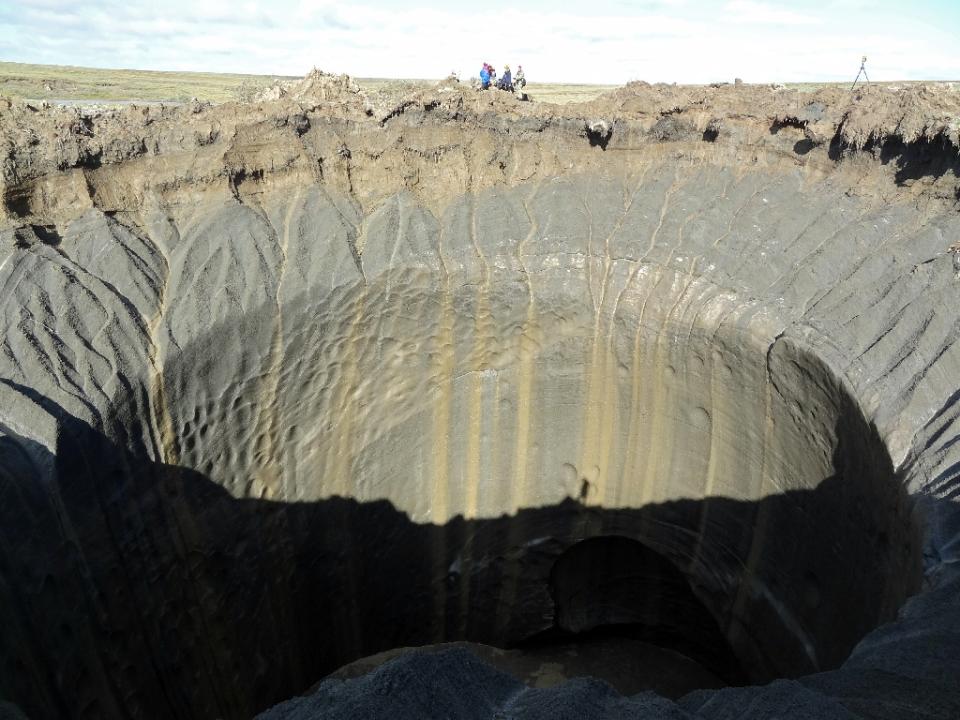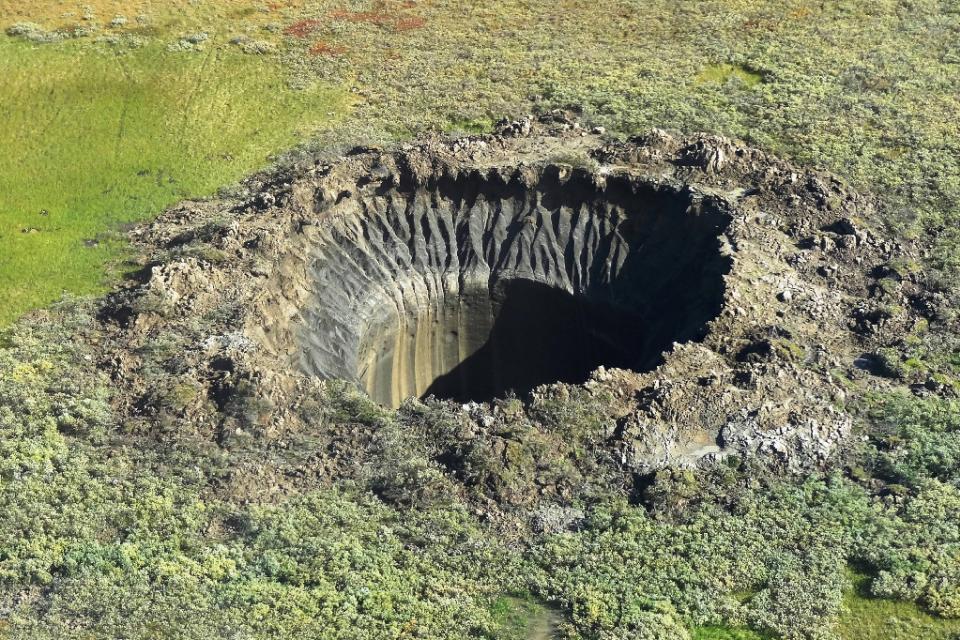
Moscow (AFP) - Russian scientists have now discovered seven giant craters in remote Siberia, a geologist told AFP on Thursday, adding that the mysterious phenomenon was believed to be linked to climate change.
The discovery of an enormous chasm in a far northern region known to locals as "the end of the world" in July last year prompted speculation it had been caused by a meteorite or even aliens.
A YouTube video of the hole went viral and a group of scientists was despatched to investigate.
"We have just learnt that in Yakutia, new information has emerged about a giant crater one kilometre (0.6 miles) in diameter," the deputy director of the Oil and Gas Research Institute of the Russian Academy of Sciences, Vasily Bogoyavlensky, told AFP.
He said this brought to seven the number of reported pits.
"Footage allows us to identify minimum seven craters, but in fact there are plenty more," he said.
All of the craters have been discovered in the remote energy-rich Yamalo-Nenetsky region in north-western Siberia.
Scientists say that rather than aliens or meteorites, the holes are caused by the melting of underground ice in the permafrost, which has possibly been sped up by rising temperatures due to global warming.
"The phenomenon is similar to the eruption of a volcano," said Bogoyavlensky.
As the ice melts, methane gas is released which builds up pressure until an explosion takes place, leading to the formation of a crater.
The scientists are still trying to estimate what danger, if any, is posed by the holes. Methane is extremely flammable and at least one of the craters is situated near an exploited gas deposit.
An expedition is planned to the latest crater discovered to determine if it was formed in the same manner.
It may be hard to identify other craters which may have formed into lakes over time, said Bogoyavlensky.
"When they appear the craters are empty, and little by little they fill up with water. In the space of two or three years they become lakes and it is difficult to study them."
He said some may have formed dozens or hundreds of years ago, but went unnoticed in such remote regions of the planet.


No comments:
Post a Comment